Small Business
Small Business Group Advocates For Community Anchor Loan Program (CAP) In Wake Of PPP Wind Down and Possible Refresh
April 17, 2020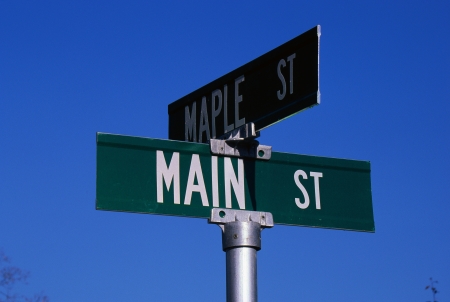 At last tally, more than 800,000 small business PPP applications have gone unfunded since the program reached its limit, many of which are genuine mom-and-pop shops that employ less than 25 people.
At last tally, more than 800,000 small business PPP applications have gone unfunded since the program reached its limit, many of which are genuine mom-and-pop shops that employ less than 25 people.
Congress is considering another round of additional PPP funding but Americans may be worrying that such funds will once again go into the hands of some of America’s largest chains. (44.5% of the $349B PPP funds went toward loans over $1 million)
Outspoken successful businessman Mark Cuban has proposed a solution, a lottery system next time around to improve the chances that smaller businesses get their share of the pie. While the public debates the merits of such an approach, one organization (the SBFA) is calling for something much more direct, a targeted fix via a Community Anchor Loan Program (CAP) that would appropriate $10 billion for businesses that were PPP-eligible for loans under $75,000 but did not receive funds.
Deployment of this capital under CAP can and should be administered by non-bank alternative lenders with proven success with this particular small business market, they say.
The proposal also calls for 25% of the funds to specifically be allocated for minority, women, and veteran-owned and agricultural businesses.
In a letter the SBFA submitted to Congress earlier this week, the organization said:
“Women and minority-owned businesses are historically smaller and employ fewer people and, in some communities, are under-banked without the established relationships required to secure a PPP loan. Small farms and agricultural businesses are important to communities and often have trouble qualifying for traditional financing.”
The Small Business Finance Association is a non-profit advocacy organization whose mission “is to take a leadership role in ensuring that small businesses have access to the capital they need to grow and thrive.”
Small Business Credit Survey Proves Itself to Be a Blast From the Past
April 15, 2020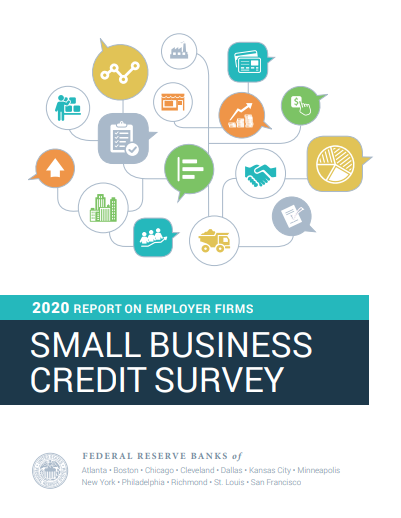 Over a month into a nationwide lockdown and it can prove hard to remember what things were like before this. The ease of going to a restaurant and sitting in, the buzz of attending a packed concert, or even the unappreciated experience of not having to maintain six feet between yourself and whoever is beside you.
Over a month into a nationwide lockdown and it can prove hard to remember what things were like before this. The ease of going to a restaurant and sitting in, the buzz of attending a packed concert, or even the unappreciated experience of not having to maintain six feet between yourself and whoever is beside you.
As well as these small joys, for many small business owners the prospect of growth is a memory, as the latest Federal Reserve Small Business Credit Survey highlights. Released in March, the report is a summary of how small business owners acted and felt towards credit in 2019, as well as how they viewed their future in 2020.
While that’s certainly a grim reminder, the report featured an interesting question which appears prescient in the wake of the impacts of covid-19. “What actions would your business take in response to a 2-month revenue loss” was put to the 5,514 respondents, which were composed of owners of businesses that employed between 1 and 499 employees (coincidentally the same range for PPP loan eligibility). And the answers highlight the extent of the trouble which many small business owners currently find themselves in.
33% said they would lay off employees, 34% reported that they would rely on debt, and just 37% stated that they would reduce salaries of the owner(s) or employees. As well as these hypothetical decisions, 17% of respondents said they would shut down and 47% noted that they would use the owner’s personal funds to ride out the storm, worrying numbers given the current situation.
And while these responses prove eerie in light of what was to come, other answers reflect the optimism that 2019 yielded. 69% of firms expected revenue to increase in 2020, 44% expected their number of employees to grow, and 56% reported revenue growth on from 2018.
Outdated as the report is, it acts as an artifact of sorts: reminding the industry of what can come before the fall, and how even when things are good, many businesses are a few steps removed from serious trouble.
Facebook Announces $100M Small Business Grant Program
April 13, 2020 Earlier this month Facebook announced that it will begin rolling out its small business grant program across the world to provide relief for companies affected by the coronavirus. Totaling $100 million in value, the program will provide funding to small businesses in over 30 countries via grants that are mostly cash, but will also include Facebook ad credits. The news comes one month after the tech giant launched its Business Hub.
Earlier this month Facebook announced that it will begin rolling out its small business grant program across the world to provide relief for companies affected by the coronavirus. Totaling $100 million in value, the program will provide funding to small businesses in over 30 countries via grants that are mostly cash, but will also include Facebook ad credits. The news comes one month after the tech giant launched its Business Hub.
$40 million of this will be allocated to 10,000 American small businesses. Beginning in Seattle and New York, the plan is to eventually launch the program in an additional 32 US cities.
Eligible businesses need not be active on Facebook, Instagram, or WhatsApp; however they must employ between 2 and 50 workers, have been in business for over a year, have experienced challenges due to covid-19’s impact, and be in or near a location where Facebook operates.
As well as the grant initiative, Facebook has launched a number of web resources to provide information about applying for SBA loans, how to better connect with customers at this time, and how to bring businesses more online. As well as this, it has expanded its digital services, upgrading its fundraising portal, offering digital gift cards, and enabling business pages to offer delivery and pickup.
“These are rolling out today in the US and our teams are working hard on bringing these tools to more countries, as we know they can be a lifeline for businesses to quickly get the capital they need until it is safe to open their doors again,” said Facebook COO Sheryl Sandberg in a statement. “Small businesses are the heartbeat of their communities. We are determined to help and we know the road ahead will require a lot more from all of us.”
Business can begin the application process by heading to Facebook’s site and checking whether their location will be included in the program.
Fundry Supports Jersey City Small Businesses and Local Police Departments in Response to Crisis
April 2, 2020Fundry, a small business finance provider, is helping to feed police officers in Jersey City. A tweet sent out by the City of Jersey City twitter account said that the company is buying meals at local small businesses to provide to police stations every day for the next 2 weeks.
Amelia’s Bistro, described as a modern American restaurant and bar in the Paulus Hook section of JC, was pictured making a delivery to the Eastern District on Thursday as part of the Fundry donation.
Nasan Ishak of @AmeliasBistroJC delivers lunch to @JCPoliceDept East District. With a donation from YellowStone Capital & @FundryC, meals will be provided to stations each day for 2 weeks. This supports our #JCFrontline responders and restaurants across #JerseyCity. #JCresponds pic.twitter.com/OpIkip2IDx
— City of Jersey City (@JerseyCity) April 2, 2020
Cybersecurity in the Time of a Pandemic
April 2, 2020 Earlier this month the FBI released a statement warning against increased instances of cybersecurity attacks on businesses and individuals during the coronavirus pandemic.
Earlier this month the FBI released a statement warning against increased instances of cybersecurity attacks on businesses and individuals during the coronavirus pandemic.
Among the Bureau’s recommendations was the suggestion to be wary of any links purporting to offer coronavirus cures, preventative equipment like N95 masks, or instant access to a stimulus package. As well as this, the statement noted that Americans can expect to see fraudulent activity from emails requesting money for charity, emergency relief, and notifying readers of airline carrier refunds. Instructing Americans to “always use good cyber hygiene and security measures,” the FBI urged computer users to be watchful.
Such warnings proved all the more relevant this week as the World Health Organization announced that it had been a target of an unsuccessful hack. Believed to be an attempt to steal information relating to the coronavirus that has not yet been released, the attacks highlights the high price that data or knowledge commands in modern life, but especially in a pandemic.
Speaking to Gene Reich, CEO of the SMB-focused IT services and cybersecurity firm Point, he explained that many hackers will strike while the iron is hot during a pandemic and seek to make money while business owners are stressed and many workers are using personal computers for professional actions.
“We’ll have more vulnerabilities because typically someone’s home computer is not well maintained or taken care of like a corporate device,” Reich explained. “There’s also a slew of new phishing emails around coronavirus that are happening. And I think there’s going to be an uptick of people taking advantage of a time where some businesses are at a disadvantage.”
The CEO warned that emails aren’t the only medium people need to be cautious of, as many phishing attempts come as phone calls. “A lot of times we talk about computers and tools, but I think that people will also be called and told, ‘Hey, this is the government, to get your stimulus package, press one,’ and then somehow they get their bank information.”
This is an example of what Reich describes as ‘social engineering,’ where someone is deceived into providing access to a network to a hacker, and that hacker may remain within that network for the short term or longer, waiting to target information or funds.
While Reich advises computer users to do the usual things of practicing caution with email attachments, links, and requests for personal information, he also mentioned one tactic that has seen complete success: shuttering the business. “Of course, there are some businesses who, unfortunately, shut the doors until further notice, and in an odd way, those people are protected, because they’re not using computers.”
$2 Trillion Senate Relief Bill to Pass Vote, Includes Small Business Funds
March 26, 2020 Senate leaders Mitch McConnell and Chuck Schumer have come to an agreement over a stimulus package that would inject $2 trillion into the US economy. With senators debating the bill at the time of writing, it is expected to pass. Said to be the largest and most robust rescue package in American history, the bill would see $300 billion go to the SBA for its 7A loan program.
Senate leaders Mitch McConnell and Chuck Schumer have come to an agreement over a stimulus package that would inject $2 trillion into the US economy. With senators debating the bill at the time of writing, it is expected to pass. Said to be the largest and most robust rescue package in American history, the bill would see $300 billion go to the SBA for its 7A loan program.
“At last we have a deal,” McConnell said after negotiations wrapped up at 1:30am on Wednesday morning. McConnell later described the bill as “a war-time level of investment into our nation.”
According to Stephen Denis, Executive Director of the SBFA, who was closely engaged with the language being placed into the bill, certain small businesses who receive SBA loans may have their loan converted to a grant, depending upon how they aim to spend the financing. As well as this, Denis made clear that small businesses will be able to use these funds to pay any charges linked to an online small business loan or MCA.
“There’s different things that you can use the SBA money for,” Denis explained in a call. “Payroll support, obviously, including paid sick leave, medical, or family leave; costs related to health care; employees salaries; mortgage payments; rent payments; utilities. And then this is another thing that we got inserted into the bill, we wanted to make sure that businesses had the flexibility to use this funding to pay existing debt obligations that were incurred before the covered period. What this means is that if a business had taken out an MCA or a loan, that they could use this money to pay off the obligations.”
As well as allotting funds for the SBA, the bill provides for cash payments of up to $1,200 to be made available directly to individuals, $2,400 for married couples, and an additional $500 per child, which will be reduced if the individual makes more than $75,000 annually or if the couple makes over $150,000. $350 billion will also be made available to help small businesses mitigate layoffs and support payroll.
The most recent example of something akin to this bill is the Troubled Asset Relief Program (TARP) that was established to help financial institutions in the aftermath of the ’08 financial crisis. And with there being some surprise in retrospect to how TARP’s funds were ultimately used, there is concern about supervision of these funds.
When asked on Monday who would provide oversight for the program to fund businesses, President Trump replied with, “I’ll be the oversight.” However, since then White House officials have agreed in closed-door negotiations that an independent inspector general as well as an oversight committee will be instated to supervise the loans.
Despite stalling in the Senate several times throughout Wednesday, Denis is confident that the bill will be voted through the Senate, and following this, through the House.
“Never make a guarantee in Washington. That’s something I’ve learned in my career. But I think this is something that both sides, both Democrats and Republicans, recognize needs to get done right now. And I can’t imagine anymore political games after the agreement this morning.”
As well as this, Denis was eager to highlight that many funders and broker shops fall under the classification of a small business, and would be eligible for some of the funds promised by this $2 trillion bill; and that if you are wondering how you might access some of the relief package upon its passing through government, to reach out to him.
Lists of States Where Non-Essential Businesses Have Been Ordered to Close
March 24, 2020Make sure you know about individual state orders that could affect a small business’s ability to operate. Below is a list of states and regions that have ordered some or all non-essential businesses to close. This list may be incomplete and the details of each state’s orders could change and may have changed since this was posted. Do you own due diligence:
- Alabama – Jefferson County
- California
- Colorado – Must reduce workforce by 50%
- Connecticut
- Delaware
- Florida – multiple counties
- Georgia – bars and restaurants
- Hawaii – Maui and Honolulu
- Idaho – Blaine County
- Illinois
- Indiana
- Kansas – multiple counties
- Kentucky
- Louisiana
- Maine – Bars and restaurants
- Maryland
- Massachusetts
- Michigan
- Minnesota
- Mississippi – Certain cities
- Missouri – Certain areas in and around Kansas City
- Montana
- Nevada
- New Jersey
- New Mexico
- New York
- North Carolina
- Ohio
- Oregon
- Pennsylvania
- Rhode Island
- Tennessee – Multiple cities and counties
- Texas – Multiple cities and counties
- Vermont
- Virginia
- Washington
- West Virginia
- Wisconsin
- Wyoming – Multiple counties
The Pandemic, The Economy, and The Presidential Race
March 20, 2020Note from the Editor: In early February, I asked one of our regular journalists, Paul Sweeney, to look into the economy and the presidential race to size up the coming election season. As he was wrapping up his interviews over the span of a month, things took a startling turn, and COVID-19 came to the forefront and changed everything. This story is an amalgamation of reporting that started one way and quickly morphed into another. In light of how fast the situation is changing, we are publishing it now rather than waiting until early April to release it in print.
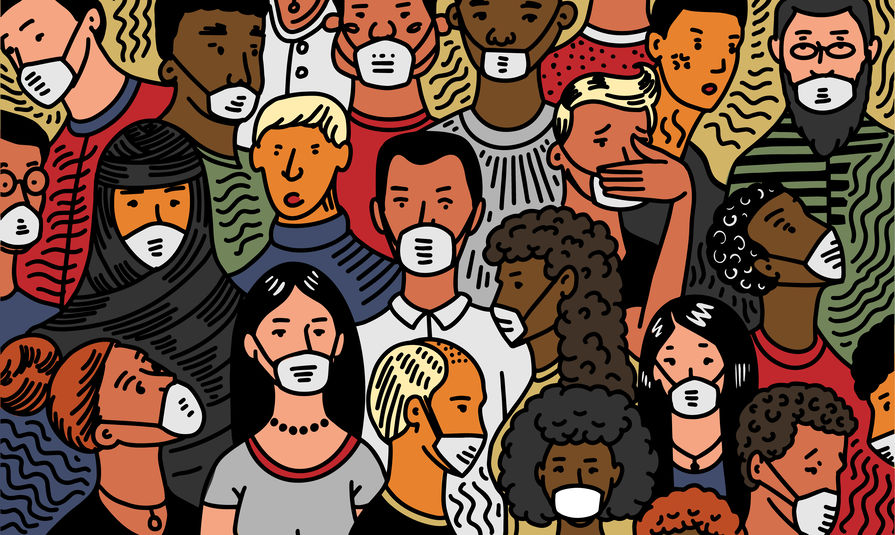
Chris Hurn, who heads an Orlando-area financial firm in Florida that specializes in small business lending, says he is witnessing fear and desperation among business owners whose stores, shops and enterprises have been thrown into a tailspin by the coronavirus pandemic.
“We’ve been overwhelmed with telephone calls and e-mails,” says Hurn, chief executive at Fountainhead Commercial Capital, a non-bank Small Business Administration lender which boasts more than $250 million in originations last year. “I’ve fielded over 300 inquiries from borrowers about these loans in just the last few days,” he added. “People are telling me that they’re being harmed and don’t know how they’ll make payroll. The SBA needs to act.”
What Hurn is experiencing in Florida is not just an isolated incident. Thousands of small businesses are under siege nationwide as Americans’ have gone into isolation in response to the pandemic, helping precipitate a full-blown economic crisis. As of March 17, the coronavirus – also known as Covid-19 – had leapfrogged across the globe since appearing in China in December, 2019, infecting people in 100 countries. There are now some 272,000 confirmed Covid-19 cases worldwide and close to 11,300 deaths, according to data compiled by scientists at Johns Hopkins University in Baltimore.
In the U.S., the number of cases has cleared 19,000 as of March 20, the death toll has climbed above 230, and coronavirus cases have been recorded in all 50 states. The Center for Disease Control reports that the number of cases are growing at 25-30% per day. But experts warn that, because of a lack of testing, the actual number of cases is certainly higher.
 The outbreak is drawing comparisons to the worldwide influenza pandemic of 1918. Popularly known as the “Spanish Flu,” that virus may have claimed as many as 100 million lives, according to estimates by the World Health Organization. Medical officials say that persons 70 and older and those with underlying medical conditions, such as a weakened immune system, are most at risk in the current pandemic.
The outbreak is drawing comparisons to the worldwide influenza pandemic of 1918. Popularly known as the “Spanish Flu,” that virus may have claimed as many as 100 million lives, according to estimates by the World Health Organization. Medical officials say that persons 70 and older and those with underlying medical conditions, such as a weakened immune system, are most at risk in the current pandemic.
“What makes this disease so lethal,” says Rachel Scott, a family physician in Austin, Texas and the author of “Muscle and Blood,” a pathbreaking study of occupational diseases, “is that people in the vulnerable population who come down with the virus are prone to contract severe acute respiratory distress syndrome. In ARDS, the virus destroys the sacs in the lungs, preventing oxygen from being delivered into the blood stream. By the time people with severe ARDS are hospitalized and treated with a ventilator, it may already be too late.”
To blunt the accelerated pace of contagion, governors and mayors are putting restrictions on citizens by curbing gatherings and monitoring interactions. Governors in 44 states have forced restaurants and bars to close shop in an unprecedented regulation of U.S. citizens. Meanwhile, millions of Americans self-quarantined and self-isolated and re-examined how they interact socially, commercially and professionally. Increasingly draconian controls to moderate the trajectory of the outbreak are not only turning cityscapes into ghost towns from coast-to-coast but throwing a giant monkey wrench into the U.S. economy.
Treasury Secretary Steven Mnuchin has reportedly warned Congressional leaders that the unemployment rate could spike to 20%.
Former Labor Secretary Robert Reich has gone Mnuchin one better amid reports that 1.2 Americans had filed for unemployment insurance. In an interview on MSNBC Thursday, Reich said he feared that the unemployment rate is likely to hit that 20% mark in the next two weeks. “Eighty percent of Americans are living paycheck to paycheck,” he declared ominously. “We’re in a national emergency.”
The pandemic and the ensuing economic crisis is also casting a giant shadow over the 2020 presidential election. “It’s a black swan event that wasn’t anticipated by any of the candidates, and the reverberations for the election are going to be huge,” said Richard Murray, a political scientist and elections expert at the University of Houston.
For the past 50 years, political analysts have generally agreed, the condition of the U.S. economy was a key predictor – if not the key predictor – to the outcome of presidential elections. President Jimmy Carter, for example, had the bad fortune to preside over a problematic economy marked by oil-price shocks and energy shortages, mile-long queues at gasoline stations, and sky-high interest rates. There was even a new word — “stagflation” – coined for the phenomenon of stagnant growth and runaway inflation, recalls David Prindle, a government professor and expert on voting behavior at the University of Texas at Austin.
There were, of course, additional negative complications to Carter’s presidency. Most notable was the “Hostage Crisis” in which Iranian students attacked the U.S. Embassy in Teheran in the fall of 1979, held 44 American diplomats and aides captive for more than a year, and made Carter look hapless and helpless. Nonetheless, Ronald Reagan, a former governor of California and longtime matinee idol, hammered Carter mercilessly on the economy, demanding: “Are you better off than you were four years ago?”
Answering that question sent Carter packing to his Georgia peanut business. “In 1980, as in every election, there were multiple causes,” says Prindle, “but the deciding factor was the economy.”
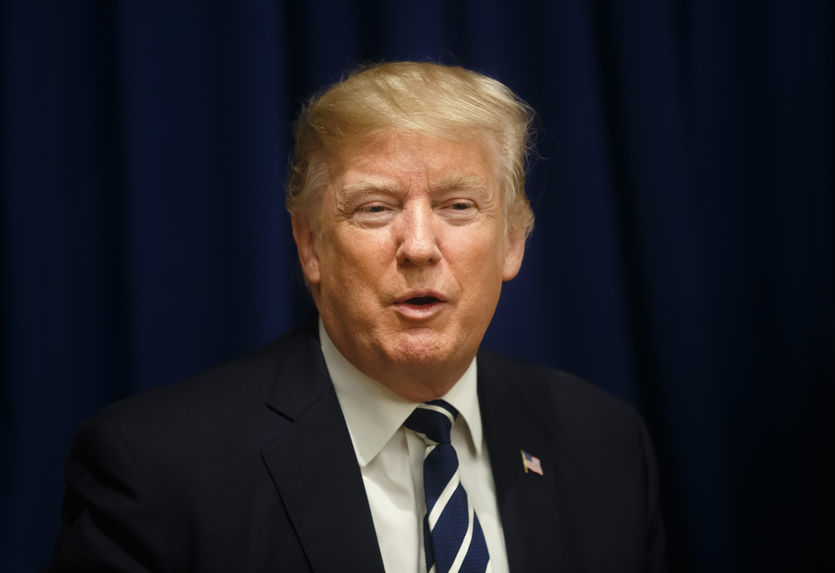 A healthy economy can serve as a mighty bulwark against opponents in a president’s bid for a second term. In the mid-1990s, an expanding economy and relentlessly buoyant stock prices – a Dow Jones Industrial Average so robust in the mid-1990’s that Federal Reserve chairman Alan Greenspan famously admonished investors for their “irrational exuberance” – allowed Bill Clinton to sail to re-election. (The good times also buffered Clinton during the ensuing sex scandal involving White House intern Monica Lewinsky.)
A healthy economy can serve as a mighty bulwark against opponents in a president’s bid for a second term. In the mid-1990s, an expanding economy and relentlessly buoyant stock prices – a Dow Jones Industrial Average so robust in the mid-1990’s that Federal Reserve chairman Alan Greenspan famously admonished investors for their “irrational exuberance” – allowed Bill Clinton to sail to re-election. (The good times also buffered Clinton during the ensuing sex scandal involving White House intern Monica Lewinsky.)
As the election year of 2020 dawned, a decently performing economy seemed to be serving President Donald Trump’s cause. Before the World Health Organization declared the coronavirus outbreak a pandemic in early March, the U.S. economy was coming off 10 full years of job growth and the unemployment rate had sunk to 3.5 percent, its lowest level in 50 years. Wages were also rising by nearly 4 percent per annum, noted Aparna Mathur, a labor economist at the business-backed American Enterprise Institute in Washington, D.C. “The economy is not spectacular,” she said, “but everything is moving in the right direction.”
Since then, however, the economy has been slammed as an alarmed country reacted to the pandemic. The NBA and NHL closed down their basketball and hockey seasons. Major League Baseball called a halt to spring training. The NCAA initially declared that “March Madness” would proceed and that hoopsters would perform before empty arenas, but then it pulled the plug. Even professional golf, an outdoor sport, hung up its cleats, announcing that The Masters, played at Augusta (Ga.) National Golf Course in April and the crown jewel of professional golf, would be postponed indefinitely.
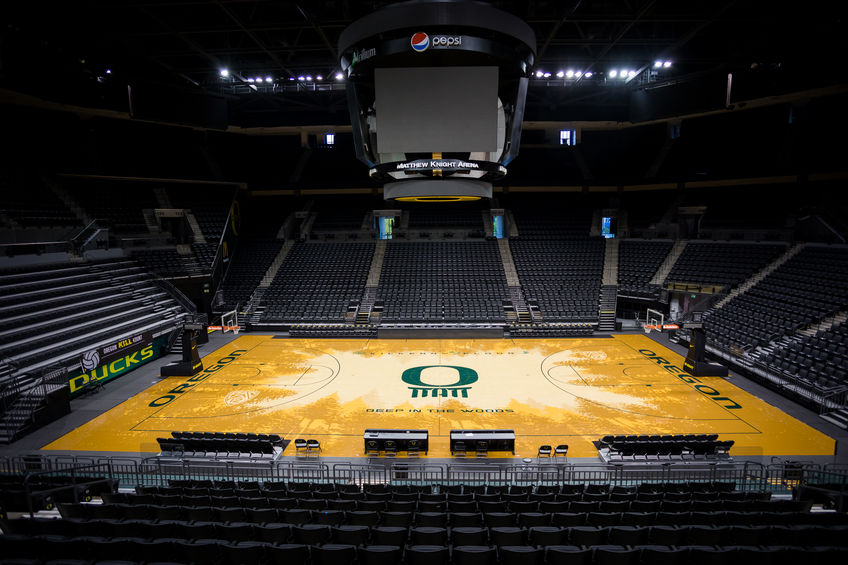 Almost overnight, colleges and universities shut down classrooms, emptied their dorms, and opted for online coursework. Some 33 million schoolchildren in 41 states have ceased attending school. Hundreds of companies, including Amazon and Microsoft in Seattle, a city hit hard by the coronavirus, are requiring their employees to “telecommute” by working at home on their laptops.
Almost overnight, colleges and universities shut down classrooms, emptied their dorms, and opted for online coursework. Some 33 million schoolchildren in 41 states have ceased attending school. Hundreds of companies, including Amazon and Microsoft in Seattle, a city hit hard by the coronavirus, are requiring their employees to “telecommute” by working at home on their laptops.
The CDC at first advised Americans not to cluster in groups of more than 25 people, then cut that figure to 10. Americans are being prodded to engage in “social-distancing” by avoiding shaking hands and separating themselves from others by a separation of three-to-six feet from others. San Francisco has gone still further, grounding cable cars, closing down clubs and bars and restaurants and effectively putting the city on lockdown.
The city of Boston called off its iconic St. Patrick’s Day parade, Broadway theaters dimmed their lights, and Starbucks forbade customers to sit down in its coffee shops. Major events like South by Southwest, the music and cultural festival in Austin, Texas, was canceled, depriving Texas’s capital city of some $350 million in economic activity.
Jilting the festival cuts deeper than the losses to airlines, hotels, bars, restaurants, and music venues, notes Alfred Watkins, a Washington, D.C.-based economist and chairman of the Global Solutions Summit, an international consulting firm. “You have all of these people in Austin who are running events and they’re hiring caterers for sandwiches and refreshments,” he said. “You have independent contractors like videographers and photographers, sound-equipment suppliers, Uber and Lyft drivers, hairstylists, and even freelance entertainment journalists — all of whom are no longer making money. For these entrepreneurs,” he added, “losing this event is a little like retailers missing out on the Christmas season. It’s when they make their money.”
The airline, travel, leisure, and tourism industries are in free-fall. Major cruise lines suspended bookings and cut short voyages after horrific reports of coronavirus outbreaks among passengers trapped at sea, temporarily putting a $38 billion industry in dry dock.
The conventions industry, which has come to a standstill after wholesale cancellations, remains a vastly under-appreciated sector of the U.S. economy, argues George Brennan, former executive vice-president of marketing at Arlington (Va.)-based Interstate Hotels and Resorts, the world’s largest independent hotel management company.
These mass gatherings are an unheralded engine of growth, he says, packing a bigger economic wallop than they get credit for. “Conventions typically draw anywhere from 2,000 to 25,000 people,” he said. “They run 6,000 to 8,000 attendees on average, and most can only be accommodated by the top 10-20 U.S. cities, which include Chicago, San Francisco, Las Vegas, Atlanta, New Orleans and Orlando.
“Conventions are often multi-dimensional,” he added. “Attendees usually spend three to five days in town. They often shop at clothing stores and other retailers. They’ll take in sporting events or, if they’re in New York, a Broadway play. They’ll go to attractions like the San Diego Zoo, or spend an afternoon on a golf course in Florida or California.”
Conventions generate a tremendous amount of commerce and revenues for vendors and exhibitors. As an example, Brennan cites his former employer, the hospitality industry. “At hotel conventions,” he said, “you’ll see people there selling curtains and sheets, soaps and towels.”
In addition, many trade groups – Brennan cites the National Association of Civil Engineers and the American Medical Association as examples – count on the annual convention as an important component of their organization’s annual revenues. “When you pay to attend,” he says, “a significant portion goes back to the association. The convention often covers the yearly salary for a group’s staff.”
 Amid the dramatic behavioral changes, the stock market registered several days of panic-selling in March, capped by a record, single-day plunge on March 16: The Dow Jones index plummeted 2,997 points, the third-worst percentage loss in history. After flirting with the level at which the Dow was reading on Inauguration Day Jan. 20, 2017, the market continued see-sawing this week, herky-jerkying between mini-rallies and skids.
Amid the dramatic behavioral changes, the stock market registered several days of panic-selling in March, capped by a record, single-day plunge on March 16: The Dow Jones index plummeted 2,997 points, the third-worst percentage loss in history. After flirting with the level at which the Dow was reading on Inauguration Day Jan. 20, 2017, the market continued see-sawing this week, herky-jerkying between mini-rallies and skids.
Hoping to prevent a coronavirus recession, the U.S. Senate adopted by an overwhelming, 90-8 bipartisan vote a $100 billion bill sent by the Democraticac-led House that expands free testing for the coronavirus, provides for paid sick leave and medical leave for some workers, and an emergency unemployment insurance and food assistance programs. The bill was signed late Wednesday night.
Meanwhile, Congress was taking up a monumental $1 trillion economic rescue plan proposed by the White House on St. Patrick’s Day (March 17) that included a bailout for the hotel and airline industries, help for small businesses, and $500 billion in direct cash payments to Americans households.
“We’re looking at sending checks to Americans immediately,” Treasury Secretary Steve Mnuchin said in a Rose Garden press conference at the White House on St. Patrick’s Day. By immediately, he added, “I’m talking about the next two weeks.”
The Trump Administration’s proposed help for small businesses has a strong supporter in Karen G. Mills, former SBA administrator and senior fellow at Harvard Business School. During her tenure in the Obama Administration, Mills was a troubleshooter in several crises including the Great Recession and Hurricane Sandy. “In a worst-case scenario with this virus contagion, getting loans to people through banks is not going to be fast enough,” she told deBanked just before the White House drew up its rescue plan. “They’ll need direct loans to people and other aid. If we lose our small business economy, it will be catastrophic.”
So how will the pandemic and the state of the economy play out politically in the November, 2020 general election between President Trump and former Vice President Joseph Biden, the presumptive Democratic nominee? The result remains shrouded in the fog of the future, of course, but the election’s contours are coming into focus.
Having seen him through numerous scandals, impeachment, and a trial in the U.S. Senate, Trump’s political and electoral following has been put to the test. Yet his backers remain unshakably loyal in a way not seen in 80 years, observed the University of Houston’s Murray. “More people are dug in now than at any time since the 1930s,” he says, as roughly 43% of the electorate is firmly lodged in Trump’s camp. “Trump’s support has been remarkably stable.”
The business community is a key demographic in the pro-Trump cohort, notes Ray Keating, chief economist at the Small Business & Entrepreneurship Council, a Washington, D.C. advocacy group claiming 100,000 members. “We have not polled our membership,” Keating says, “but when you look at the data they overwhelmingly vote Republican. We find that support for Donald Trump is clear and substantial.”
Richard Yukes, a Las Vegas-based oilman and longtime entrepreneur who votes his pocketbook, will be pulling the lever for Trump in the November election. The reason? Trump not only presided over a robust economy for the past several years, Yukes says, but the president slashed Obama-era regulations imposed on his industry. “Government regulation and bureaucratic regulation often get mishandled and misdirected by federal bureaucrats and Trump is for less regulation,” Yukes says. “I think America works best with less regulation.”
The owner and operator of oil wells in Wyoming, Yukes benefited handsomely last year when Trump’s Environmental Protection Agency relaxed rules governing methane leaks. The oilman reckons that complying with the regulations had been costing him an extra $1,500 per well each year.
No matter how well the economy has performed in the past three years, however, the pandemic economy promises to be a “game-changer,” says political scientist Murray, and history shows that voters are likely to take stern measure of the incumbent president’s performance during any a crisis.
Trump’s initial response to the coronavirus reminds Murray of Woodrow Wilson’s reaction to the Spanish Flu pandemic in 1918 while World War I was still raging. “As the U.S. was approaching climactic battles in Europe, President Wilson suppressed the news of the flu and the story didn’t get out though eventually people knew about it,” Murray says.
Wilson’s deceit hurt Democratic candidates who were battered in the 1918 midterm elections, just a few days before the November 11 armistice. Two years later, after Wilson had a stroke, the Democratic presidential candidate got crushed in the 1920 election by Warren G. Harding, a Republican senator from Ohio.
After war and influenza, Americans voted enthusiastically for Harding’s promise of “normalcy.”





























